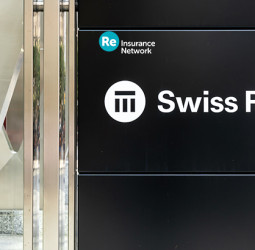A new report by Tom Johansmeyer, Global Head of Index Classes at Price Forbes Re, highlights that various reinsurance solutions could support the long-term growth of the cyber re/insurance market. However, the emergence of new capital sources, including increased participation from the insurance-linked securities (ILS) market, will be critical.
Johansmeyer emphasizes that tapping into alternative capital to transfer cyber risks beyond the traditional insurance and reinsurance frameworks can help the market absorb more risk effectively. This would not only strengthen the insurability of cyber risks but also pave the way for substantial business growth, making cyber insurance an integral part of a comprehensive cyber security strategy.
Despite the rising demand, concerns about cyber warfare, systemic risks, and uncertainty have deterred capital from entering the market, limiting its capacity and exacerbating economic vulnerabilities linked to cyber risks.
The report also highlights projections by Gallagher Re, which estimates that cyber reinsurance premiums will soar from $6.5 billion in 2023 to $80 billion by 2033, surpassing the property catastrophe reinsurance market in size. However, this growth, with reinsurance cession rates steady at around 50%, will demand additional capital allocation by reinsurers.
Johansmeyer notes that while innovative reinsurance structures can fuel market expansion, capital markets, especially the ILS market, will play a pivotal role. He cites a notable increase in ILS participation in cyber risks, rising from $500 million over five years ending in 2021 to over $1 billion by 2023. This growth has been driven by new catastrophe bond issuances, such as Beazley’s private and public cyber catastrophe bonds in 2023, along with transactions by Chubb, AXIS, and Swiss Re.
However, Johansmeyer cautions that the impacts of ILS and other new capital forms will be gradual and take years to scale. As the cyber market evolves, the interplay between economic security and the re/insurance sector’s role in national cybersecurity strategies remains a key concern. Even with improved insurability, the market must address the “likability” of cyber risks for investors.
Johansmeyer stresses the need for additional capital, particularly from global financial markets, to support the industry in managing major, systemic cyber events. While the $250 trillion in global investable capital offers stability, catastrophic events of unparalleled magnitude could still challenge market absorption.
Turning to catastrophe bonds, Johansmeyer highlights their role in addressing systemic cyber risks, similar to their function in property catastrophe reinsurance. The cyber catastrophe bond transactions completed in late 2023 demonstrate progress in scaling and diversifying risk transfer mechanisms.
Johansmeyer concludes that the cyber re/insurance market must continue to mature and innovate. Reinsurance has been instrumental in expanding coverage, but new capital sources, such as ILS, will underpin the next phase of growth. Despite contrarian views, the industry has an opportunity to address these concerns, attract further capital, and solidify cyber risks as a robust and insurable sector.
This evolution, supported by education and market transparency, could further enhance the sector’s appeal to investors and stakeholders alike.
















Recent Comment
Thank You
Nice Article Brother
Nice blog